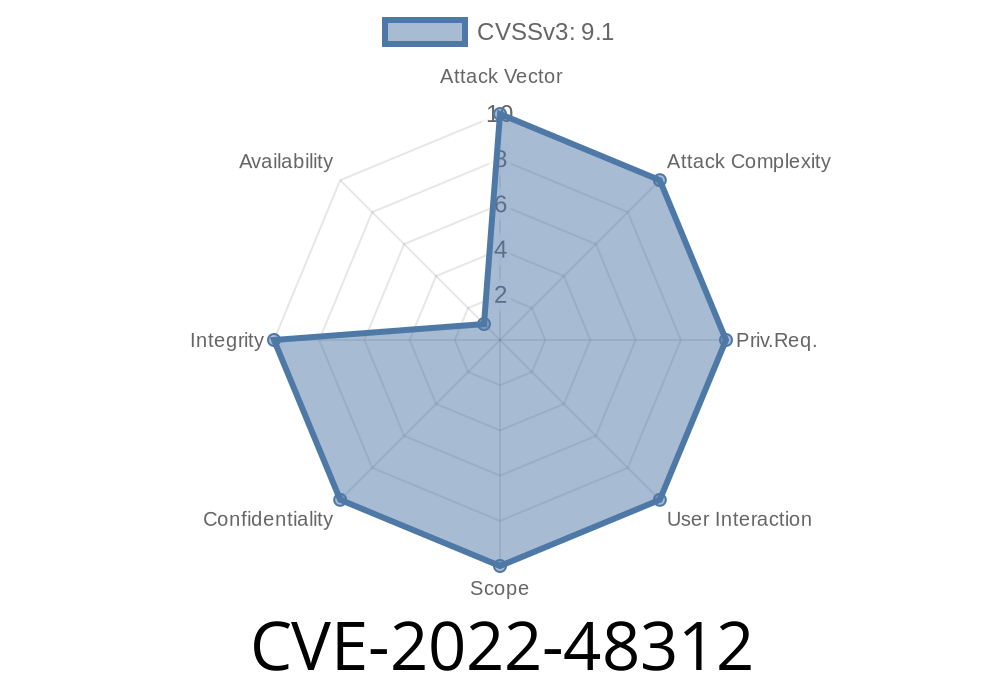---
The cybersecurity world is full of silent enemies—hidden just beneath the surface of everyday software. One such issue is CVE-2022-48312, a vulnerability found in Huawei’s HwPCAssistant module. This flaw can allow attackers to read or write data outside of designated memory zones—a critical violation that could leak sensitive information or let an attacker change how a system behaves.
This article explains what CVE-2022-48312 is, unpacks how it works, and provides clear code snippets, references, and possible exploit approaches, all explained in simple terms.
What is CVE-2022-48312?
This vulnerability occurs within the HwPCAssistant module—a component found in some Huawei products. The underlying problem is out-of-bounds read and write. This means an attacker could trick the module into reading from or writing to memory locations not intended for such access.
Technical Breakdown
This vulnerability is rooted in how HwPCAssistant handles user-provided input without proper boundary checks. When the module reads or writes from/to an array, it does not always make sure the index is within safe bounds.
Imagine this sort of C-like code in the assistant
void process_input(char *input, int length) {
char buf[128];
// No sanity check on 'length'
memcpy(buf, input, length);
}
If length is larger than 128, memcpy will read or write past the end of buf, possibly into other program memory. An attacker could craft their input to exploit this.
Suppose an attacker sends a crafted payload to overwrite return addresses or sensitive variables
import socket
payload = b'A' * 140 # 128 bytes buffer + 12 extra bytes, aiming for OOB
s = socket.create_connection(('victim_ip', 12345))
s.sendall(payload)
s.close()
Real-World Exploit Path
1. Identify attack vector: The attacker needs a way to send data to the vulnerable HwPCAssistant function. This could be over a local interface, network, or even through a crafted file.
2. Send exploit payload: By carefully crafting the payload size and content, the attacker triggers an out-of-bounds read or write.
Overwriting function pointers or critical variables (potential remote code execution)
- Crashing the module/application, causing service disruption
Responsible Disclosure and Patches
Huawei has recognized this vulnerability and released advisories and patches for affected products. If you use a system with the HwPCAssistant module, it’s critical to update your software as soon as possible.
Official Huawei Security Notice:
NVD NIST Details:
CVE Record:
How to Stay Safe
- Apply Patches: Check for firmware or software updates from Huawei for your hardware or application.
Watch Inputs: Sanitize and validate all input to modules that could be affected.
- Monitor Systems: Watch for unusual crashes or memory-related messages that could suggest exploitation attempts.
Conclusion
CVE-2022-48312 isn’t “just a bug”—it’s a window into your system memory, left open by forgotten checks. Out-of-bounds vulnerabilities are serious because they allow attackers to view or control data they should never have access to.
All users and administrators should review the advisories, update affected products, and keep best security practices in mind. Staying vigilant is the only way to keep your systems and data safe.
References
- Huawei PSIRT - Security Advisory
- National Vulnerability Database - CVE-2022-48312
- MITRE CVE Record
Remember: Security is everyone’s responsibility. Don’t let small bugs become big breaches.
Timeline
Published on: 04/16/2023 07:15:00 UTC
Last modified on: 04/26/2023 12:44:00 UTC
